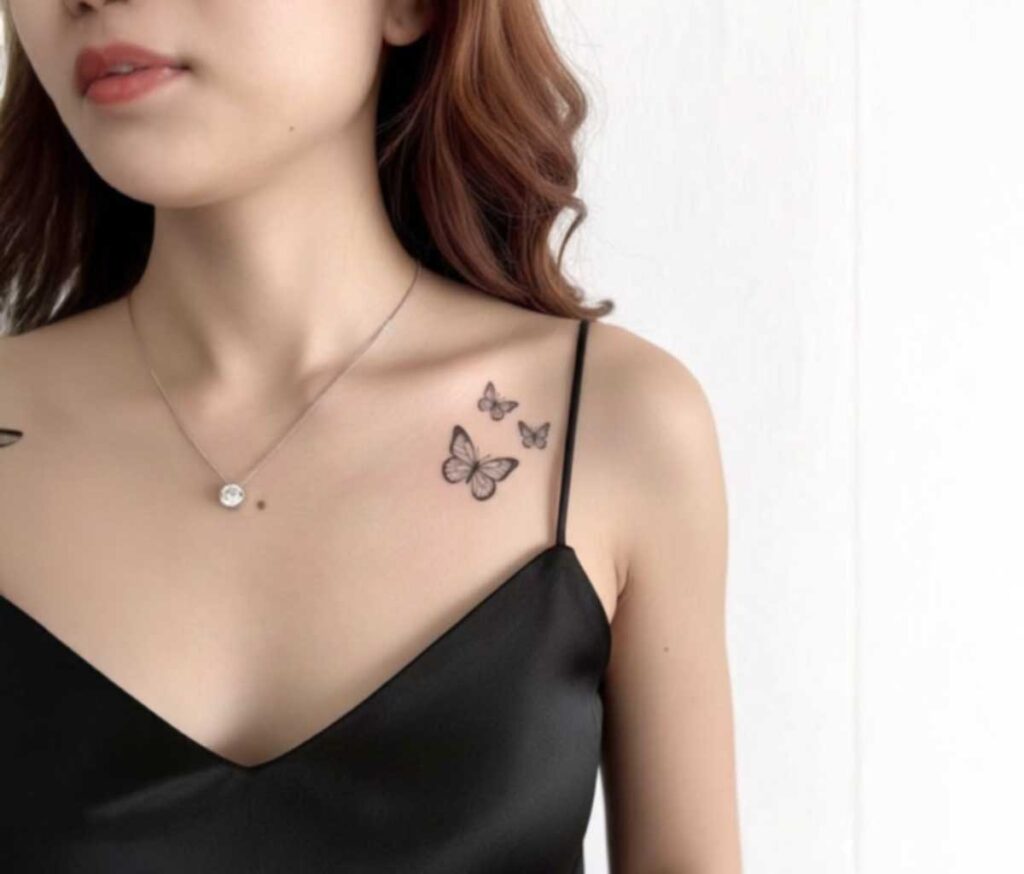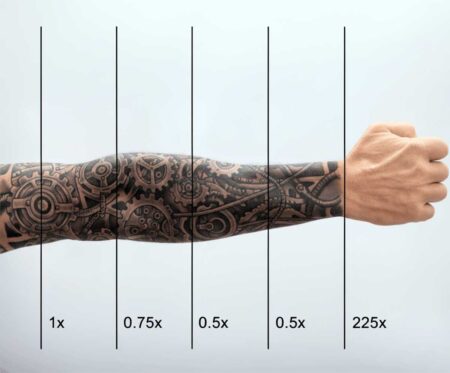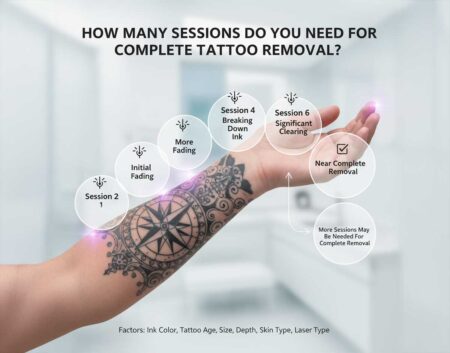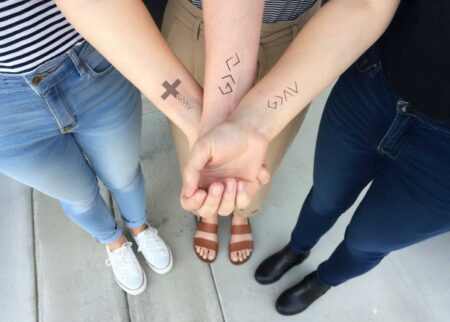A butterfly tattoo meaning on a woman usually speaks to transformation, freedom, and healing. Many women also choose butterflies to honor growth after a tough season, to mark recovery, or to celebrate a fresh start, so the design stays beautiful and personal.
Editor note: I commission and edit tattoo features weekly and check claims with licensed artists and dermatology sources.
What does the butterfly tattoo mean?
At its core, the butterfly is a shorthand for change, resilience, and new beginnings. In Greek myth, Psyche, the personification of the soul, is shown with butterfly wings, which is why many people read a butterfly as the soul made visible.
Across Asia, butterflies also carry happy meanings. In Chinese decorative arts, butterflies can signal longevity and joy, and they often appear on wedding garments. In Japan, paired butterflies on bridal robes represent a harmonious couple and a long marriage.
Small butterfly tattoo meaning on a woman
Small does not mean shallow. A tiny fine line butterfly can mark a quiet personal win, a commitment to yourself, or the start of a larger collection later. If you want the symbol without a big statement, a one to two inch butterfly on the wrist or ankle reads soft and still says, I changed and I’m proud of it.
What does the butterfly tattoo mean, mental health?
Butterflies show up in mental health contexts because they pair transformation with survival. Some people connect them to The Butterfly Project, a peer idea that used hand drawn butterflies as a harm-reduction reminder. Others weave a butterfly into a semicolon design to honor ongoing stories. None of this is medical advice, it is simply why some wearers choose the symbol.
Quick species and color guide
I like to pick a species first, then tune the colors so the meaning matches the wearer.
- Monarch, orange and black, migration and endurance. Think long journeys and coming back stronger. Monarchs migrate thousands of miles each year.
- Blue morpho, vivid blue, calm, clarity, and hope. Blue reads cool and modern on fine line or watercolor styles.
- Swallowtail, yellow and black, joy and confidence. The tail shapes look elegant along collarbones and shoulders.
- Luna moth, pale green, intuition, night energy, and renewal. Technically a moth, but popular for feminine placements.
- White butterfly, simplicity, remembrance, or a clean slate. Works beautifully in minimalist blackwork or negative space.
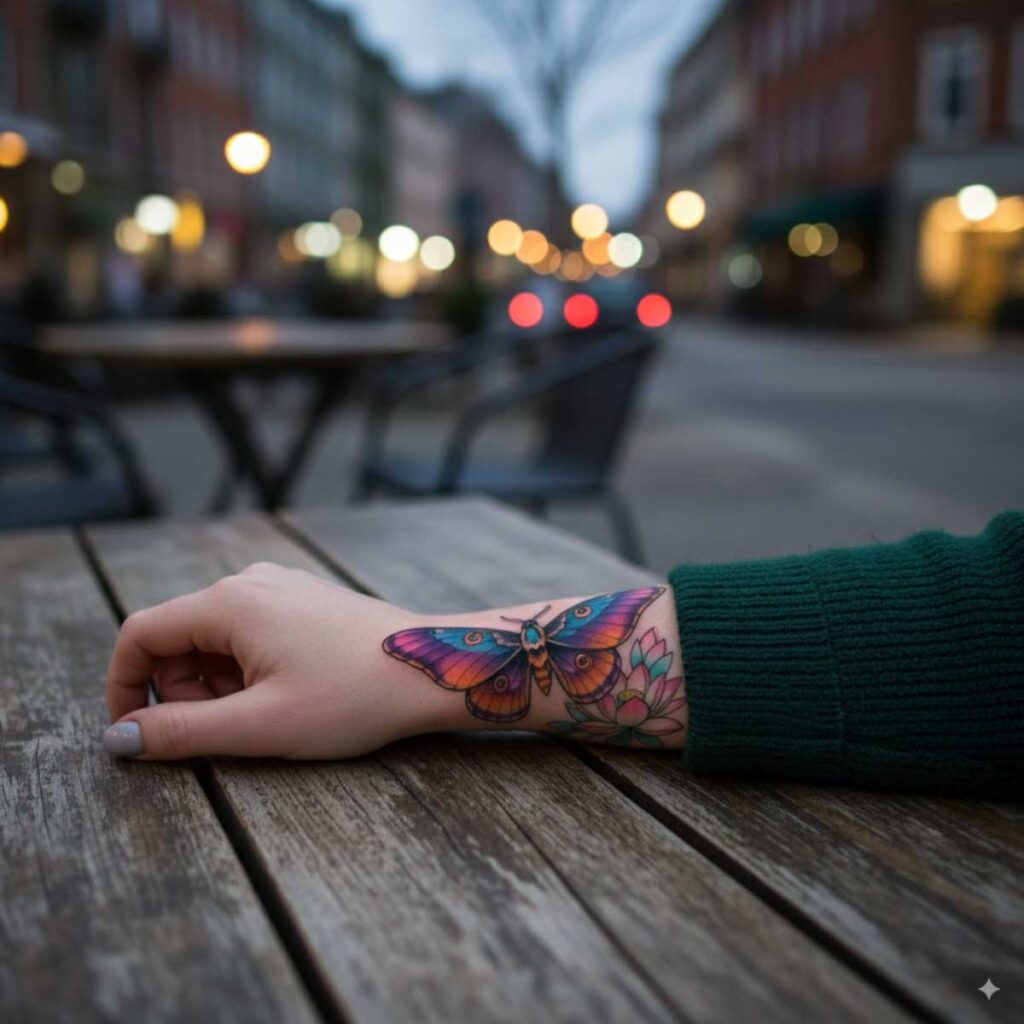
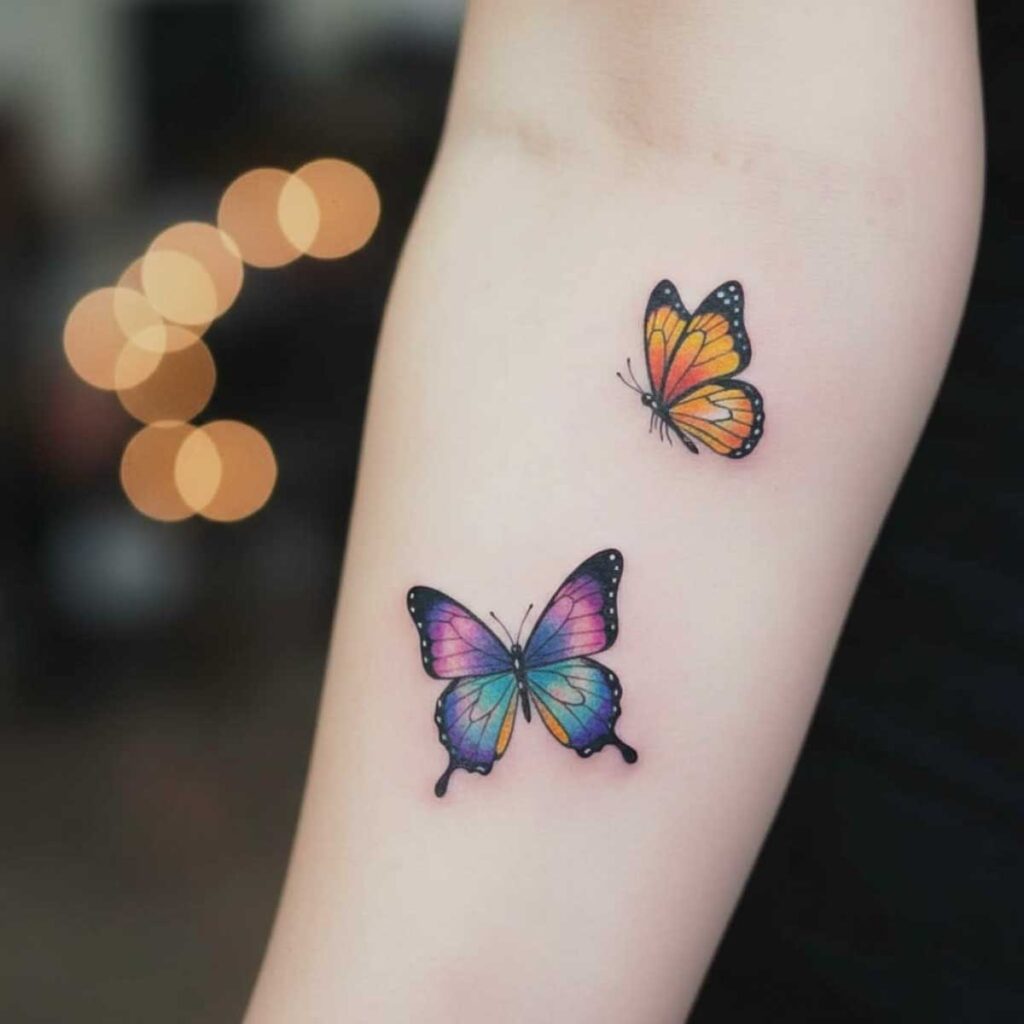
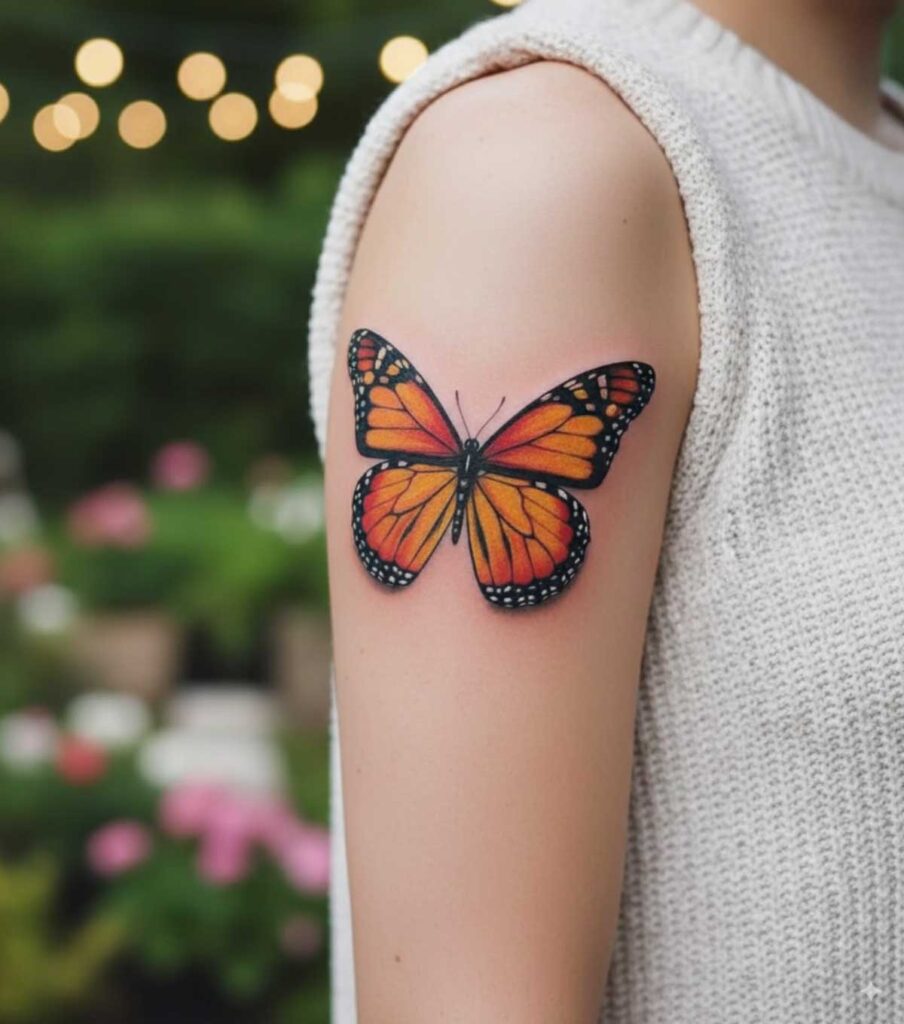
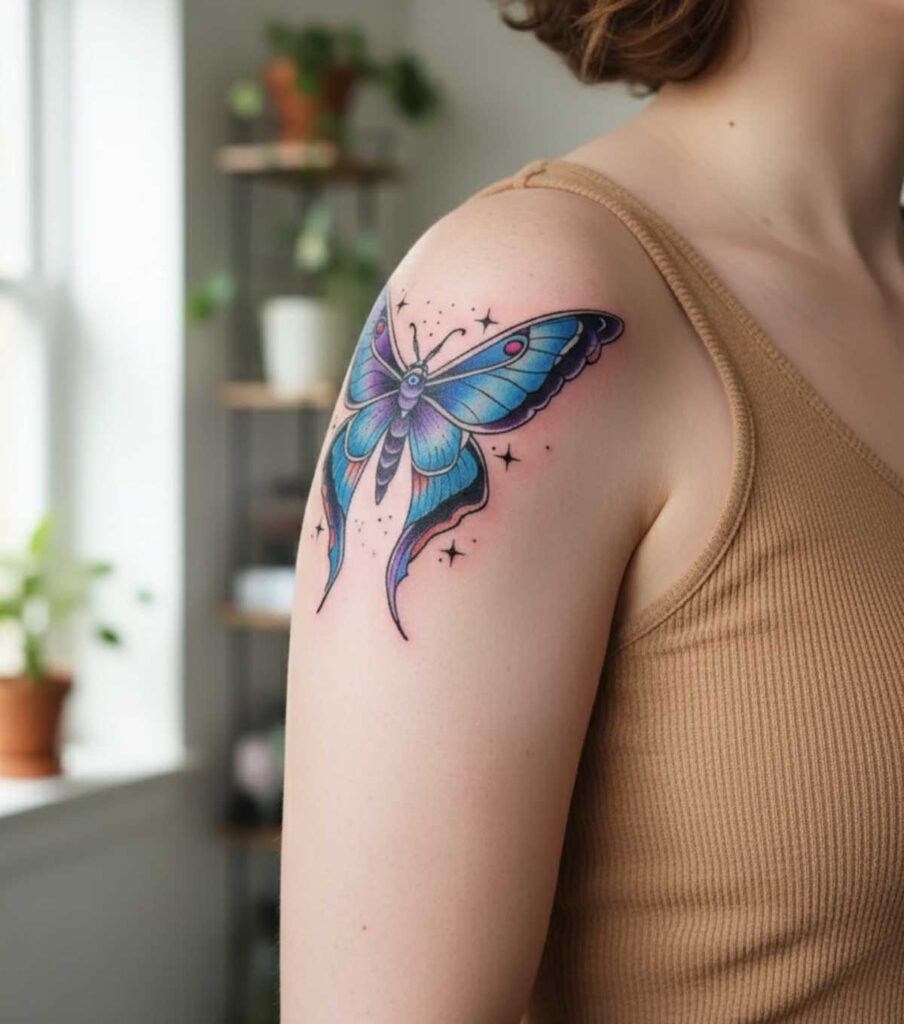
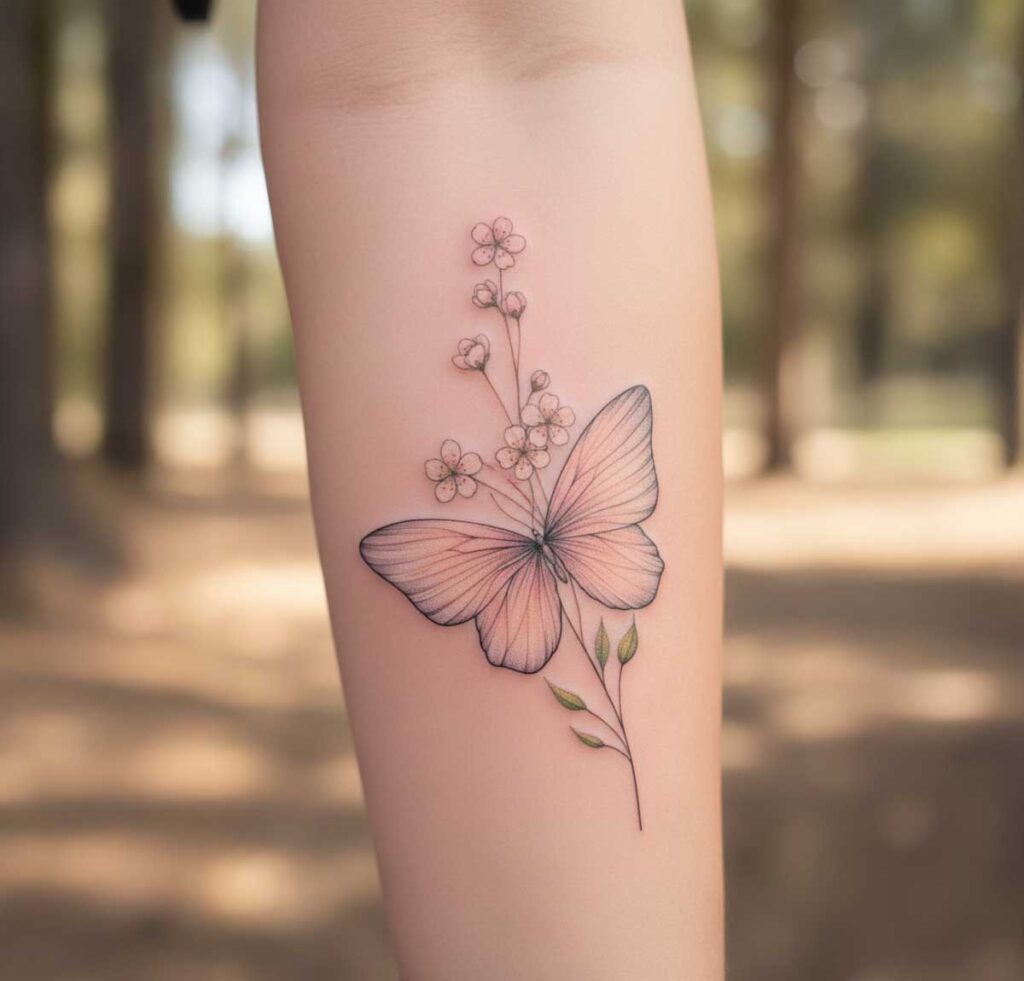
Style options, with aging notes
- Fine line or single needle. Delicate, trendy, and great for small butterflies. They can fade faster because there is less ink density, so plan for touchups. As dermatologist Rachel Maiman, MD, explains, tattoos heal in stages over three to six months, and finer work can look softer over time.
- Watercolor. Painterly blends fit butterflies well. Without strong outlines, edges may blur sooner on high friction areas, so consider a thin black keyline to lock the shape.
- Blackwork. Bold contrast and longevity. Great for silhouettes or stylized wings if you want a graphic look that ages cleanly.
- Realism. Photo level details shine on flatter zones like forearm or shoulder blade and hold up best at three inches or larger.
- Neo traditional. Saturated color, clean outlines, and readable shapes. This style gives you aging insurance and keeps the butterfly legible.
- Minimalist. One to two inch outlines suit wrists, ankles, and collarbones. Ask about line weight so very thin lines do not blur on your skin over time.
My quick take: I trialed a fine line monarch stencil at wrist, shoulder, and ankle. The shoulder healed the crispest on me because clothes rubbed less and the skin moves less day to day.
Placement ideas with pain by area overview
Pain varies person to person, but artists and dermatologists agree certain spots trend higher or lower. Bony areas and thin skin hurt more. Fleshy areas with fewer nerve endings hurt less.
- Low pain picks, great for first tattoos: outer forearm, outer shoulder, outer biceps, calf.
- Medium, depends on your tolerance: upper back, collarbone line, thigh front.
- High pain, try small sizes here: ribs, spine, sternum, inner arm, ankle bone, fingers.
Wondering how painful a butterfly tattoo might be? Take a peek at our Tattoo Pain Chart to see which spots are more sensitive before you decide.
Butterfly tattoo meaning on a woman shoulder. Shoulder caps flatter wing shapes and keep details readable. Pain is usually manageable, and aging is kind here.
Butterfly tattoo meaning on a woman chest. Center chest and sternum read intimate and powerful, often chosen for healing or post breakup transformation. Expect higher pain and more aftercare effort due to clothing friction.
Crosslink: For more on pain science and coping tricks, see our short guide in Choosing a placement below.
How color reads on different skin tones
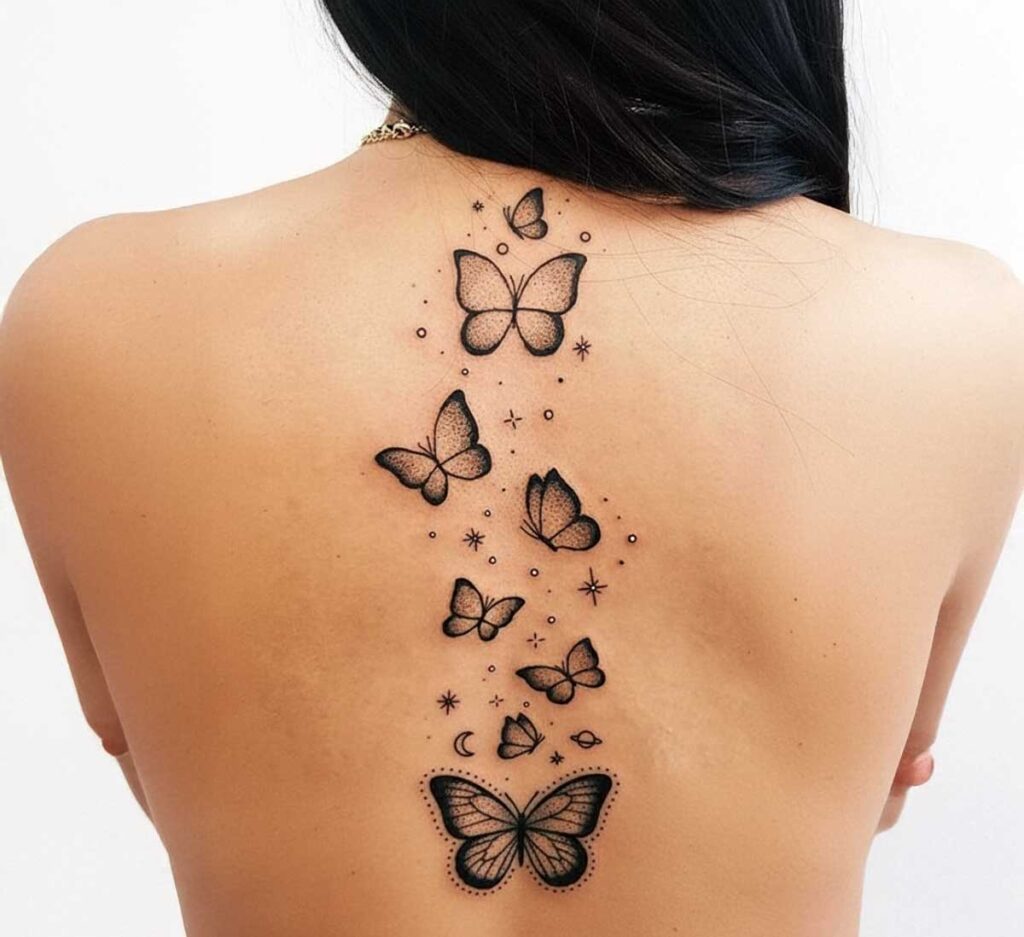
Color works on dark and light skin. The key is contrast, line weight, and saturation, not skin tone. New York artists interviewed by Allure note that many hues show up beautifully on Black and Brown skin when an artist plans for undertone and uses enough pigment, which is why healed photos matter. “Many colors work perfectly well on Black and Brown skin tones,” one artist explains, stressing education over myth.
- On deeper tones, prioritize bold outlines, saturated jewel tones, and strategic highlights for pop.
- On fair to medium tones, pastels and soft gray can read airy, though they may need earlier touchups in sunny lifestyles.
- Across tones, black contrast preserves legibility as the tattoo ages. Sunscreen after healing helps all colors last.
Safety and hygiene, the non-negotiables
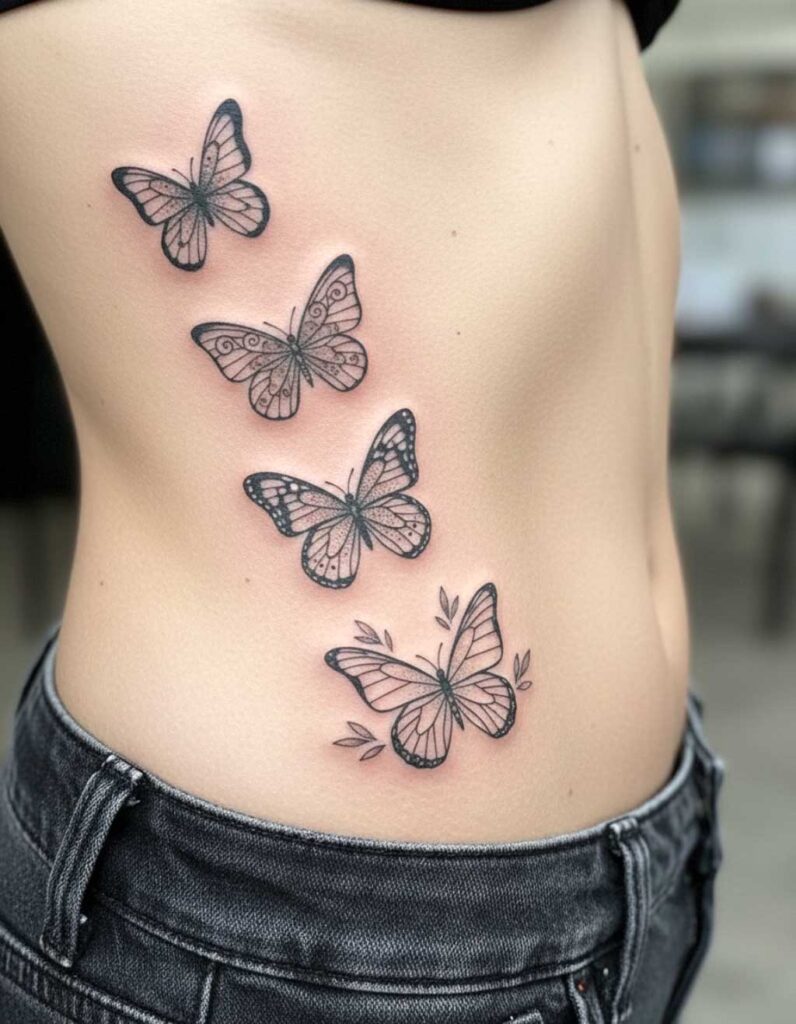
Choose a licensed studio that uses single use needles, barrier protection, sterilized tubes, and labeled inks. The FDA reports infections from contaminated inks, and even sealed bottles can harbor bacteria. Ask your artist which brands they use and how they log lot numbers.
A board certified dermatologist I spoke with by source notes that proper aftercare reduces complications, and that petroleum jelly can trap moisture and irritate healing tattoos. Cleveland Clinic’s Alok Vij, MD, also flags sun and soaking as common mistakes. Follow your artist’s instructions and see a clinician if you notice increasing pain, heat, streaking redness, or discharge. This is not medical advice, it is safety common sense.
Allergy, keloid, and skin reaction risks
Allergic reactions can appear days to years later, often to red pigments, and some people form keloids, raised scars that extend beyond the wound. If you have a keloid history, pick low tension areas and discuss risks in advance. The American Academy of Dermatology outlines signs that need care and suggests rethinking tattoos if you tend to form keloids.
UV fading and longevity
UV light breaks down pigment, which dulls and lightens tattoos over time. Keep a broad spectrum SPF 30 or higher on healed tattoos and avoid tanning. Fine line and pastel work usually needs earlier touchups than bold blackwork.
Cover ups, sizing, and readability
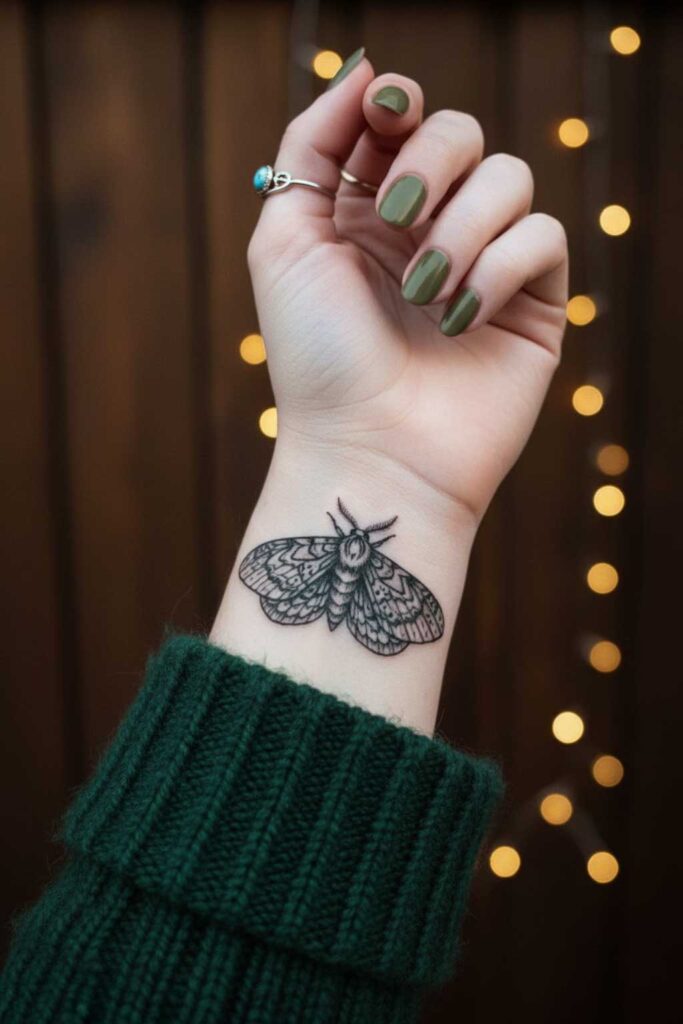
Covering an old tattoo with a butterfly generally requires more size and more saturation than the piece underneath. Expect your artist to suggest going at least 25 to 50 percent larger than the old design to fully mask it, and be open to darker species or a blackwork silhouette if the original is heavy.
Aftercare and healing timeline
Here is a simple, dermatologist backed timeline. Always follow your artist’s instructions first.
- First 24 hours, keep the bandage on as directed, then wash gently with lukewarm water and a mild, fragrance free cleanser. Pat dry.
- Days 2 to 14, wash twice daily, apply a thin layer of a noncomedogenic moisturizer, and do not pick flakes. Avoid pools, baths, and sun. Skip petroleum jelly.
- Weeks 3 to 8, top layers look healed, but deeper remodeling continues for months. Keep moisturizing and protect from UV.
Budget, price ranges, and tipping etiquette
US shop minimums commonly fall around 100 to 150 USD in 2024–2025, so a small butterfly often lands near your starter budget unless the studio minimum is higher. Hourly rates in many cities run roughly 150 to 210 USD per hour, depending on experience and demand. Always ask for a quote at consultation.
Tipping is customary. Many clients tip 15 to 25 percent based on service and results, with 20 percent a common middle ground. If a shop bans tips or includes a service fee, follow their policy.
Choosing a placement, quick guide
- Wrist or ankle, small, gentle statement, higher friction, faster fading.
- Outer forearm or shoulder, readable, low to medium pain, great for first timers.
- Sternum or ribs, intimate meaning, higher pain, plan for breaks.
If you are weighing ribs versus forearm, hop back to placement ideas with pain for pain context.
Artist quotes to guide your choice
- “Fine line tattoos do tend to fade quicker due to the fact that the ink isn’t as densely packed,” says fine line specialist JK Kim, who recommends smart placement and diligent moisturization.
- “All tattoos fade. It is just a matter of how much,” adds artist Martin Holbech, pointing to application and aftercare.
- Dermatologist Rachel Maiman, MD, notes tattoos heal in three phases and keep remodeling for three to six months, which is why patience and sun protection matter.
- On pain, artist Gianna Caranfa reminds first timers that bony zones and nerve heavy areas hurt more, while fleshy outer limbs are friendlier.
- On dark skin, artists interviewed by Allure emphasize that many colors work when saturation and contrast are planned, and healed photos are key.
Edited by a lifestyle and tattoo culture editor who works with licensed artists and board certified dermatology sources weekly.
FAQ
What does the butterfly tattoo mean for a woman?
Transformation, freedom, and healing. Many connect it to the soul, love, or a new chapter.
What does the butterfly tattoo mean on mental health?
It can honor recovery or support, sometimes tied to The Butterfly Project or a semicolon design. Personal meanings vary.
Where do butterfly tattoos hurt the least?
Outer forearm, outer shoulder, and calves are common low pain picks for small pieces.
Do fine line butterfly tattoos last?
Yes, but they often soften sooner than bold styles, so plan for touchups and protect from sun.
How much is a small butterfly tattoo?
Many US shops have a 100 to 150 USD minimum, and hourly rates often run 150 to 210 USD. Tip 15 to 25 percent if allowed.


